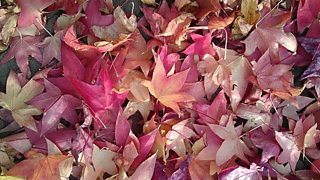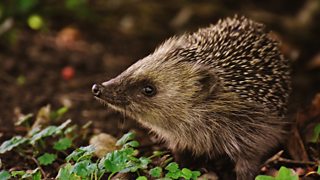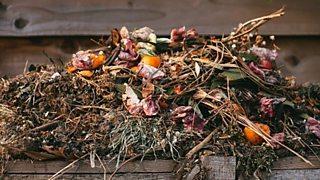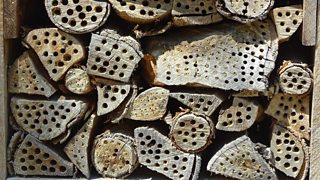How to create winter shelters for wildlife in your garden
Earthwatch Europe
Partner organisation of the Watches
By Jess Creber, Animal Biology & Conservation student (Oxford Brookes University) and Earthwatch Europe volunteer
From hedgehogs in their leaf piles to dormice curling up for the winter, many of us look for shelter from the wind and rain this time of year. Within your there are many ways to create homes for wildlife this winter. We will share how you can make shelters for wildlife.
Hedgehog houses
Hedgehogs have been in decline over the last few decades. This is due to habitat fragmentation. There are lots of ways to help, like cutting holes in your garden fence or leaving rocks as a slope out of water in your garden for them to climb out. One thing you can do is provide hedgehog houses. No need to buy one - a few bricks and a solid roof will suffice! Or even better - a pile of undisturbed leaves.

Shelters may not be used when you first put them out, because hedgehogs need to discover them and feel safe - so be patient. By leaving food out you may be able to tempt them into your garden. Give hedgehogs meaty cat food and a fresh bowl of water. Remember, mealworms can cause longer-term health problems, and hogs are lactose intolerant so no milk for them! In the last 20 years, hedgehog numbers have fallen by over 50% in rural areas, so anything you can do in your garden for them will help.

Hibernacula
A fun activity for a winter’s day is building a hibernaculum! This can benefit amphibians and reptiles. These structures can be made with objects commonly found outside. By digging a hole and making corridors with loosely packed sticks, and leaves, wood and seeds over the top, it can make a good addition to any wildlife-friendly Naturespace.

Over the last 30 years, 68% of common toads in the UK have been lost. This is because of habitat loss, fragmentation and intensification of agriculture. Another way of helping amphibians is to leave a ping pong ball in any body of water in your space so that it doesn’t freeze over and amphibians can still get in to feed. If you are unable to dig a hole, another way of helping amphibians and reptiles is a compost heap in an open bottom container. This is perfect for slow worms to snuggle up in to.
Here is a to making a hibernaculum.
Bird boots
You may have seen people using their old boots as bird houses, nailing them up to overhanging areas or shelters in their gardens. This is great for giving an old item new life! This, alongside the classic bird feeders, planting thick bushy native evergreens and log-piles for foraging for food will help our feathered friends.

Over the past 25 years, many garden bird populations have decreased. By increasing food availability and nesting areas, we can give them a chance to recover.
Bug hotels
Due to the increase of insecticides, habitat degradation and climate change, insects have been having a tough time. These six-legged friends may give you the creeps, but they are highly beneficial for the life cycle as well as our garden plants.
Insects such as ladybirds and lacewings need a place to hibernate. Overwintering somewhere safe is vital for resistance to disease and survival in the colder months. By creating a bug hotel out of old bits of wood, sticks or even logs with holes drilled in them, these creepy crawlies can stay sheltered and cosy until the spring.

Let us know what wildlife you have enticed into your Naturespace on our Naturehood page or discover more actions you can take for wildlife on our website.
